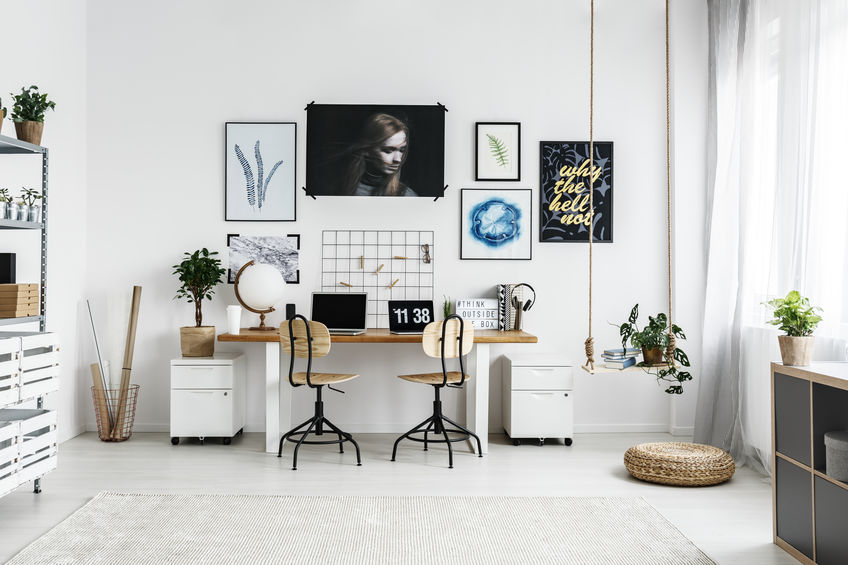My Experience with Working from Home
First of all, this is the third or fourth blog I’ve written about running a Home based business on my blog:
- Benefits of Home Based Business
- Making your Home-Based Business a Success
- Awarded 2015 SBA Home Based Small Business Advocate

Since it’s been a few years since I’ve discussed the topic, and with the global pandemic of Coronavirus, those working from home is at an all-time record high and will probably remain this way for the foreseeable future. Although, I suspect this sudden and unexpected transition will create a ‘new normal’ where working from home will increase for employees and entrepreneurs long-term.
While initially, many have discovered the advantages (no commute, less carbon footprint, healthier eating at home, more time with family and often more productive days with less distractions), some are struggling to adjust to working in their home environment.
I’ve been running a mostly home-based business for over 20 years, so I understand the pros and cons better than most. Of course, in normal circumstances, I do regularly meet with clients at my office downtown and usually I am on the road at least two days a week meeting with clients in three counties as well as attending networking events. So this period of working exclusively from home is also new to me. With that in mind, I will offer some new things I’ve learned during this pandemic as well as the procedures and tips I’ve learned over the 20 years of running a business from a home office.
Working from Home Successfully is all about Compartmentalization
“Psychology defines compartmentalization as a defense mechanism, or a coping strategy, which doesn’t impart a very good connotation. Put simply, it’s how our minds deal with conflicting internal standpoints simultaneously. As an entrepreneur you’re going to have to compartmentalize your entire life.”
– Forbes
While previously thought a tool for those dealing with emotional trauma or depression, now many experts see it as an effective tool to manage work/life balance for business owners and professional. It’s all about visually creating compartments or rooms in your busy, active minds so you can focus on the activity at hand and shut the door on distractions, whether working in an office or home.
“Compartmentalization is a skill. It’s the ability to be hurt, sad, disappointed, afraid or angry about something and put those feelings away until a time when you can deal with them better. Healthy people do it all the time.”
– Huffington Post

When utilizing the brain’s gift of compartmentalization, you are able to focus on the current project and turn off or temporarily put away nagging thoughts, anxieties, items on your to-do list, notifications, and even the distractions of your environment. Like any skill, it takes time and practice to learn and utilize. As you begin compartmentalizing, you may need to physically shut down distractions: close the door, put soothing background music on, turn off email and social media notifications, put your phone in a desk drawer and don’t check it until you have finished the current task. In time, it will come more naturally, you will need less interventions as your brain develops the ability to shut out those distractions as your focus improves.
When transitioning to working at home, there are physical and mental adjustments you can make to improve focus and keep that work/life balance when working remotely. From various online meetings and workshops I’ve attended recently, this is the biggest complaint, so I’d like to address some of the common mistakes and common complaints of working from home.
How to Separate Work from Home If They’re One in the Same
So home is where we relax, unwind, spend time with family, play with our pets, prepare food, entertain friends, clean, do laundry and prepare for the next day. Work is where we get things done professionally, accomplish our job duties and responsibilities, socialize with co-workers, attend meetings, answer emails, communicate and coordinate and make decisions. Our home-self is separate from our work-self, as we naturally compartmentalize who we are and how we think based on our location. How can we accomplish that mental and emotional separation when the location is one in the same? That is where the challenge lies but it can be overcome.

Create a separate space for where you work, preferably not in the kitchen, your bedroom or common area of the home where you tend to relax. Find an extra bedroom, a corner of your basement, an attic, a rarely used den, or if worse case scenario your dining room. Rearrange the space to become an efficient work space with a desk or table, a comfortable chair, your desktop or laptop computer, a small file cabinet on wheels, a desk organizer to hold pens, files, stapler, paper clips and whatever else you need. Make it look and feel like a real workspace, as that will affect how efficiently and focused you work in that space.

Keep the workspace as separate and as sound-proof as possible. Ideally the space you’ve chosen will have a door to close off your space but if not, can you use a screen or even a sheet to provide a barrier from distractions during your day. Especially when you make phone calls or are attending remote meetings, it would be advantageous to have a quiet spot of the home to listen and talk without the sound barking dogs, children’s chatter or hearing your spouse or partner’s as they also work from home.

Take breaks as you do when you’re at work. It’s okay to take a break to make a cup of coffee, walk the dog, throw a load of laundry in, prepare a healthy lunch or spend time with the kids. I find it best to schedule those breaks after you complete tasks and need to reboot mentally before starting the next task. That’s why the separation of space is so vital, because when you leave that space, you become the mom (or dad), the wife or your home-self, so that when you return from your short break (no more than 15-20 minutes every 2-3 hours), you’re back to work-self mode. You’d do the same if you were at work, take a walk, a snack at the vending machine or conversations at the water cooler, so give yourself permission to take short breaks throughout the day as long as you return focused and ready to work.

Leaving Work when Working at Home. As essential it is to stay focused on accomplishing work during your day, it’s just as important to turn work off after your day is done. What time do you leave work when in the office? That should not change when working at home. If your day typically ends at 5:00pm, at 4:45pm wrap up the task you’re working on, write up your to-do list for the next day, quickly address any unanswered emails or voicemails that need your attention, (even if it’s a message saying, “I will get back to you first thing tomorrow. Thank you.”). Then turn off your pc, your email notifications, and set your phone to silent so as to avoid interrupting your time with family and your time to unwind. The next day, return to your work space according to your normal work schedule, for example 8:00am, and then turn all your work communications back on then and not a minute earlier. Remember finding work/life balance all about compartmentalization.
Balancing Parenthood while Working from Home
Trying to work remotely with children at home is the most difficult of all challenges, when typically all the above advice goes off the rails. How you utilize methods of compartmentalization and how successful you find consistent productivity at home has more to do with the age of the children above all else. In this time of the Coronavirus crisis and time of social distancing, our children’s mental and emotional health should be our number one priority. Remember their routine has been turned upside down too and they are being sequestered from friends and family when those social connections are imperative for their emotional growth.
For Parents of Young Children & Infants

If your children are young, for example a toddler or infant, than your schedule will completely revolve around them, rather than the other way around. Your workload will have to be scheduled when they are napping, playing quietly or even sleeping at night. When my son was young, I worked during his naps and often worked after I put him in bed around 8:00pm until 11:00-12:00am.
If you are unable to have in-home childcare, you will have to work closely with your managers or clients to reduce your duties while the social distancing guidelines are in place. Our children are our priority, so consider this a time to really bond with our little ones, they can feel our stress during this time, so comfort them, play with them and love them. You will be able to look back on this time with fond memories and so will they.
For Parents of Children 10+

If your children are older and can work independently, make a schedule to keep them productive through the day while you are working. If they are home-schooling, you will need to schedule more frequent breaks during the day to answer questions, go over schoolwork and ensure they are staying on task. With my son, I always take time in the morning to start his day with a to-do list, breakfast and a positive thought to start our day, then break with him at lunch to prepare our food, eat, talk and go over his day’s progress. Children of any age will feel neglected if we essentially ignore them during our workday. It’s amazing how even a short bursts time of our exclusive attention throughout the day will make them feel safe and love.
Regardless of Age, our Children are our Priority

Regardless of age, reward your child for staying quiet during your workday and show your appreciation for them as they are having to share their mom or dad with work during the day, by making the evenings all about them. Spend time with them, take a walk or play with them outside, include them as you cook, clean and do laundry, play cards or board games with them, and limit their screen time. Also, just as you are working on turning off your work during family time, don’t discuss schoolwork during their off time, unless they initiate it or are needing extra help. They need a break from the stress of school, especially in these uncertain times, to relax and unwind and reboot before the next school day starts.
Working from Home is All About Making Adjustments

It’s a continually learning process and each day has it’s own challenges and rewards, as well as the need for continual tweaks and adjustments to stay on track and productive. Don’t give up, learn from others, and experiment different methods as there will be some pieces of advice that work well for you and some that don’t. Each individual’s home life, workload and attention span are very different so you may need to adjust even experts’ advice to fit your particular needs.
Once you enhance your skills of focus and compartmentalization, honestly your productivity will improve regardless of your location. We’ll discuss applying compartmentalization in your work/life balance in an upcoming blog.







1 Comment